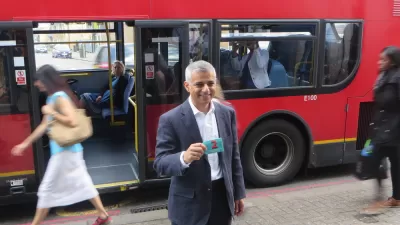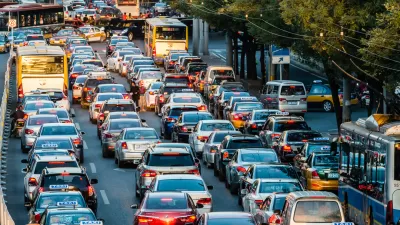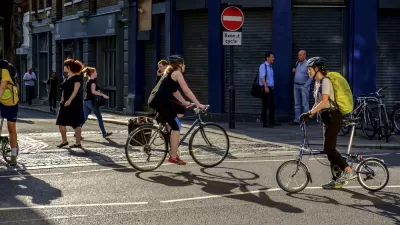An analysis of areas designated as "low traffic neighborhoods" shows a decrease in vehicle ownership rates, a promising sign for the traffic-choked metropolis.

Inspired by the Netherlands' famously bike-friendly urban infrastructure, London's Mini-Hollands program funded Dutch-style improvements in three outer London boroughs. With London consistently ranking in the top ten most congested cities in the world, city leaders hope to emulate their continental neighbors and reduce the need for private cars in and around the city.
The program introduces traffic calming interventions, sometimes removing vehicle traffic from neighborhoods altogether. It also promotes improved bicycle and pedestrian infrastructure that encourages active transportation and keeps residents safe. The goal of the initiative is to encourage a shift from cars to bikes for short trips and reduce vehicle travel within neighborhoods.
A recent analysis of vehicle registration data examined whether the interventions had a measurable effect on vehicle ownership in London's outer boroughs. The findings show that car ownership fell at much higher rates in the areas designated as "low traffic neighborhoods" or LTNs, with vehicle ownership continuing to decline as the program went on. Other active transportation improvements had a smaller effect on vehicle ownership, but areas that received them still reduced their car ownership at higher-than-average rates. The study's conclusions indicate that LTN interventions contribute significantly to a mode shift away from private cars.

Study: Maui’s Plan to Convert Vacation Rentals to Long-Term Housing Could Cause Nearly $1 Billion Economic Loss
The plan would reduce visitor accommodation by 25,% resulting in 1,900 jobs lost.

Alabama: Trump Terminates Settlements for Black Communities Harmed By Raw Sewage
Trump deemed the landmark civil rights agreement “illegal DEI and environmental justice policy.”

Why Should We Subsidize Public Transportation?
Many public transit agencies face financial stress due to rising costs, declining fare revenue, and declining subsidies. Transit advocates must provide a strong business case for increasing public transit funding.

Paris Bike Boom Leads to Steep Drop in Air Pollution
The French city’s air quality has improved dramatically in the past 20 years, coinciding with a growth in cycling.

Why Housing Costs More to Build in California Than in Texas
Hard costs like labor and materials combined with ‘soft’ costs such as permitting make building in the San Francisco Bay Area almost three times as costly as in Texas cities.

San Diego County Sees a Rise in Urban Coyotes
San Diego County experiences a rise in urban coyotes, as sightings become prevalent throughout its urban neighbourhoods and surrounding areas.
Urban Design for Planners 1: Software Tools
This six-course series explores essential urban design concepts using open source software and equips planners with the tools they need to participate fully in the urban design process.
Planning for Universal Design
Learn the tools for implementing Universal Design in planning regulations.
Smith Gee Studio
Alamo Area Metropolitan Planning Organization
City of Santa Clarita
Institute for Housing and Urban Development Studies (IHS)
City of Grandview
Harvard GSD Executive Education
Toledo-Lucas County Plan Commissions
Salt Lake City
NYU Wagner Graduate School of Public Service





























